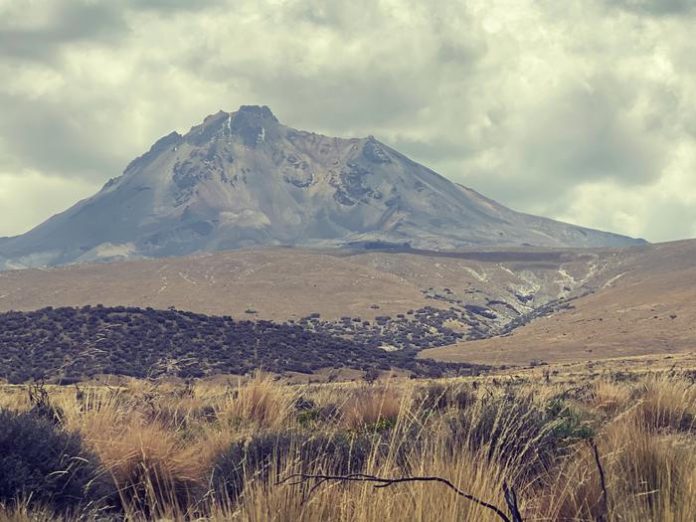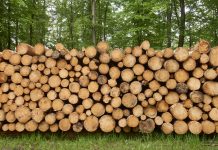
Wildfires are devastating the fragile Andean ecosystems of Peru. A new study reveals the extreme vulnerability of the Arequipa shrublands to these blazes, with severe soil degradation hindering ecosystem recovery and threatening crucial water sources in this arid region
The Andean Mountains, a vital ecosystem and crucial water source for surrounding regions, are facing a growing threat: wildfires. A recent study conducted by the Universidad Miguel Hernandez de Elche (UMH) has revealed the extreme vulnerability of the Arequipa shrublands of Pichu Pichu, Peru, to these blazes. Unlike ecosystems adapted to fire, the arid, volcanic soils of this region are ill-equipped to recover, leading to severe soil degradation and hindering the long-term health of the ecosystem.
This research highlights the urgent need for understanding and mitigating the impacts of wildfires, especially in the context of climate change.
Ecosystem vulnerability: A landscape unprepared for fire
The September 2018 wildfire that ravaged nearly two thousand hectares of shrubland on the Pichu Pichu volcano served as a stark reminder of the destructive potential of fire in this region. The study, published in the Spanish Journal of Soil Science, analysed soil samples from the affected area and revealed a significant loss of soil organic carbon (SOC) four years after the fire. SOC is a crucial component for soil fertility, and its depletion has far-reaching consequences.
“The Peruvian Andes are not prepared for wildfires,” warns Professor Jorge Mataix Solera, a UMH scientist with extensive experience in post-fire soil recovery. He emphasises the stark difference between fire’s impact on ecosystems like the Mediterranean, which have evolved with fire, and the fragile Andean soils.
The research demonstrates that the Pichu Pichu wildfire has triggered substantial physical and chemical degradation, hindering the natural processes of ecosystem recovery.
Water repellency and the erosion crisis
The already precarious situation is compounded by the natural water repellency of these arid soils. This characteristic, influenced by organic matter and high sand content, is exacerbated by fire. “While well-structured and evolved soils, such as Mediterranean soils, have a high water-holding capacity, young volcanic Andean soils, which are naturally sandy, lose this ability after fire-induced organic matter loss,” explains UMH researcher Minerva García Carmona.
The loss of vegetation cover after a fire further intensifies this issue. Without plant roots to bind the soil and retain moisture, water runs off the surface, accelerating erosion and carrying away vital topsoil. This erosion further reduces clay content and weakens the overall soil structure, creating a vicious cycle of degradation.
The role of key plant species in ecosystem vulnerability and protection
The study also investigated the influence of different plant species on post-fire soil degradation, focusing on two native species: Berberis lutea (“palo amarillo del Perú”) and Parastrephia quadrangularis (“tola”). The research found that areas dominated by Berberis lutea experienced greater soil degradation.
García suggests this is likely due to the plant’s larger size and higher biomass, which leads to more intense combustion and consequently, greater soil damage. This finding underscores the complex interplay between vegetation, fire, and soil health in these fragile ecosystems.
A volcanic landscape under threat
Pichu Pichu, situated in the central volcanic zone of the Andes, is a high-altitude “cold desert” with limited precipitation. The region’s unique climate and geology contribute to the vulnerability of its soils. While the shrublands dominate the higher elevations, the foothills of Pichu Pichu support vital queñua (Polylepis) forests, home to a rich diversity of plant and animal life, including endangered species.
These forests, along with the shrublands, play a critical role in water retention and regulation for the surrounding areas. The increasing frequency and intensity of wildfires pose a significant threat to these crucial water sources.
Climate change and the future of Andean ecosystems
Peru has witnessed a dramatic increase in wildfires in recent years. September 2024 saw a record-breaking number of wildfire hotspots, according to the Queimadas satellite monitoring project. This alarming trend underscores the urgent need to understand the impacts of fire on these vulnerable ecosystems.
“In a region like Arequipa, located in a desert environment, understanding soil response under new fire regimes is essential for assessing ecosystem resilience to climate change,” explains a UMH researcher. As temperatures rise and droughts intensify, the risk of wildfires is expected to increase, further threatening the delicate balance of these Andean ecosystems.
A call to action
Professor Mataix emphasises the importance of research in developing effective prevention strategies and post-fire treatments. He stresses that this is a global concern, with lessons applicable not only to Peru but also to fire-prone regions like Spain and California. While fire is a natural part of some ecosystems, the climate crisis is exacerbating these events, pushing fragile ecosystems like the Andean shrublands to their limits.
The UMH study serves as a crucial call to action, highlighting the need for proactive measures to protect and restore these vital ecosystems in the face of increasing wildfire threats. Understanding the complex interactions between fire, soil, and vegetation is essential for developing effective conservation strategies and ensuring the long-term health and resilience of the Andean landscape.










